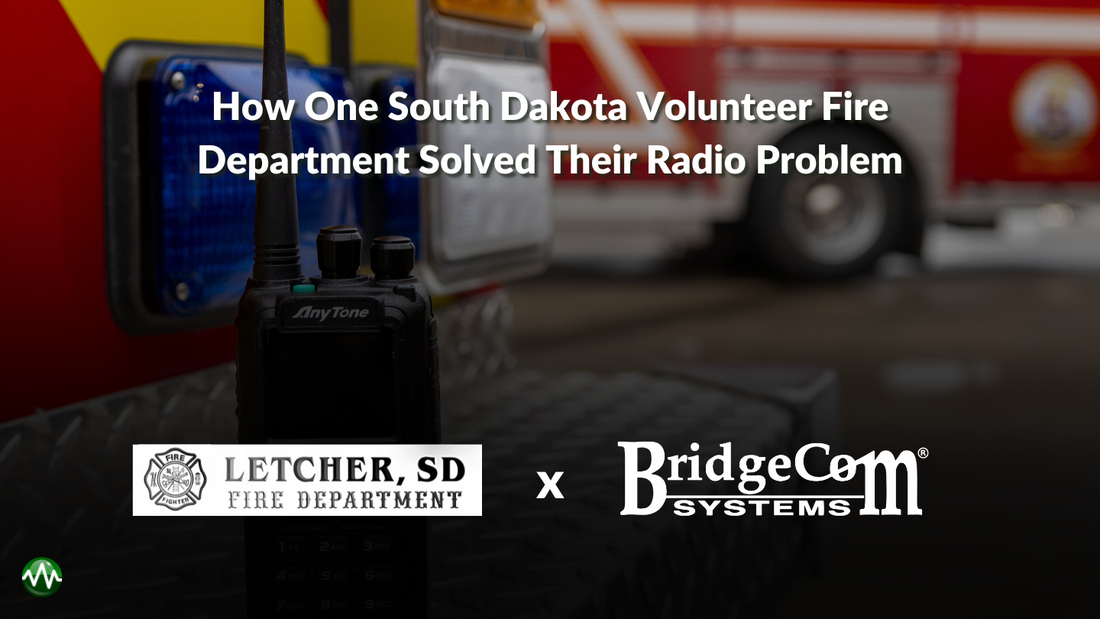
Case Study: How One South Dakota Volunteer Fire Department Solved Their Radio Problem

Staying connected is one of the most important parts of any emergency call. But for small or rural fire departments, radio systems can be tricky. Not every team uses the same type of radio, and it can be hard to talk to other counties or departments during a fire.
That’s the situation the Letcher Volunteer Fire Department was in until they found a simple radio that worked with all the systems around them.
About the Department
The Letcher Volunteer Fire Department is based in South Dakota and has 30 volunteer firefighters. They cover a large area around 600 to 700 square miles and often respond to grass fires. Because of their location, they work closely with neighboring departments from other counties that use different radio systems.
Carter Star, a professional firefighter, volunteers with the team and helped guide the radio decision.
The Challenge
The Letcher VFD had a big problem: not all their radios worked with other counties. Some neighboring departments used analog radios, others used digital (DMR). Some were on UHF, others on VHF.
When fighting grass fires or helping with mutual aid, this caused confusion and dropped communication. Their older radios were also expensive and didn’t solve the problem.
They needed a simple, affordable solution that let them talk to everyone.
The Solution
Carter heard about BridgeCom radios from nearby departments. Those teams were already using them and said they worked great.
Here’s why the Letcher team chose BridgeCom:
-
Radios work with DMR and analog
-
Support both VHF and UHF frequencies
-
Affordable enough to outfit a 30-person volunteer team
Now, no matter which county or system they’re working with, the BridgeCom radios connect easily.
Implementation
The rollout was simple. Each firefighter got a BridgeCom radio. Some wear them inside their jackets with a speaker mic outside, while others clip them to the outside without a mic depending on what works best for them.
There was no need for a major system overhaul or complex programming. The team was up and running quickly.
The Results
Since switching to BridgeCom, communication across departments is much easier. The team can now talk to anyone, on any band, without swapping radios or guessing which channel to use.
Even though the radios aren’t fireproof, that’s not an issue — Carter says their expensive radios aren’t fireproof either. What matters most is that these radios work when it counts.
"These radios basically do everything," Carter said.
"They’re great for departments like ours that need to connect with different counties and radio types."
Benefits at a Glance
|
Feature |
What It Means for Letcher VFD |
|
Works with DMR + analog |
Easy to switch between systems |
|
Dual-band: VHF + UHF |
Connects to all counties and departments |
|
Simple setup |
No tech team needed |
|
Affordable |
Great fit for volunteer budgets |
|
Flexible wear options |
Comfortable and practical in the field |
|
Improved communication |
Safer, faster teamwork |
Why It Matters
For small departments with big coverage areas, the right radio can make all the difference. The Letcher Volunteer Fire Department found that one affordable, all-in-one radio was the key to better teamwork, faster calls, and safer outcomes.
BridgeCom made that possible without breaking the budget.
For more information:
📞: 816-532-8451
📧: contactus@bridgecomsystems.com
Technical Support: https://support.bridgecomsystems.com/
Get an advanced tech call: https://www.bridgecomsystems.com/pages/advanced-tech-call
💬 Connect with us:
Facebook: facebook.com/bridgecomsystems
Instagram: instagram.com/bridgecomsystems/
Twitter: twitter.com/BridgeCom_Radio
LinkedIn: linkedin.com/company/bridgecom-systems
Website: bridgecomsystems.com/






